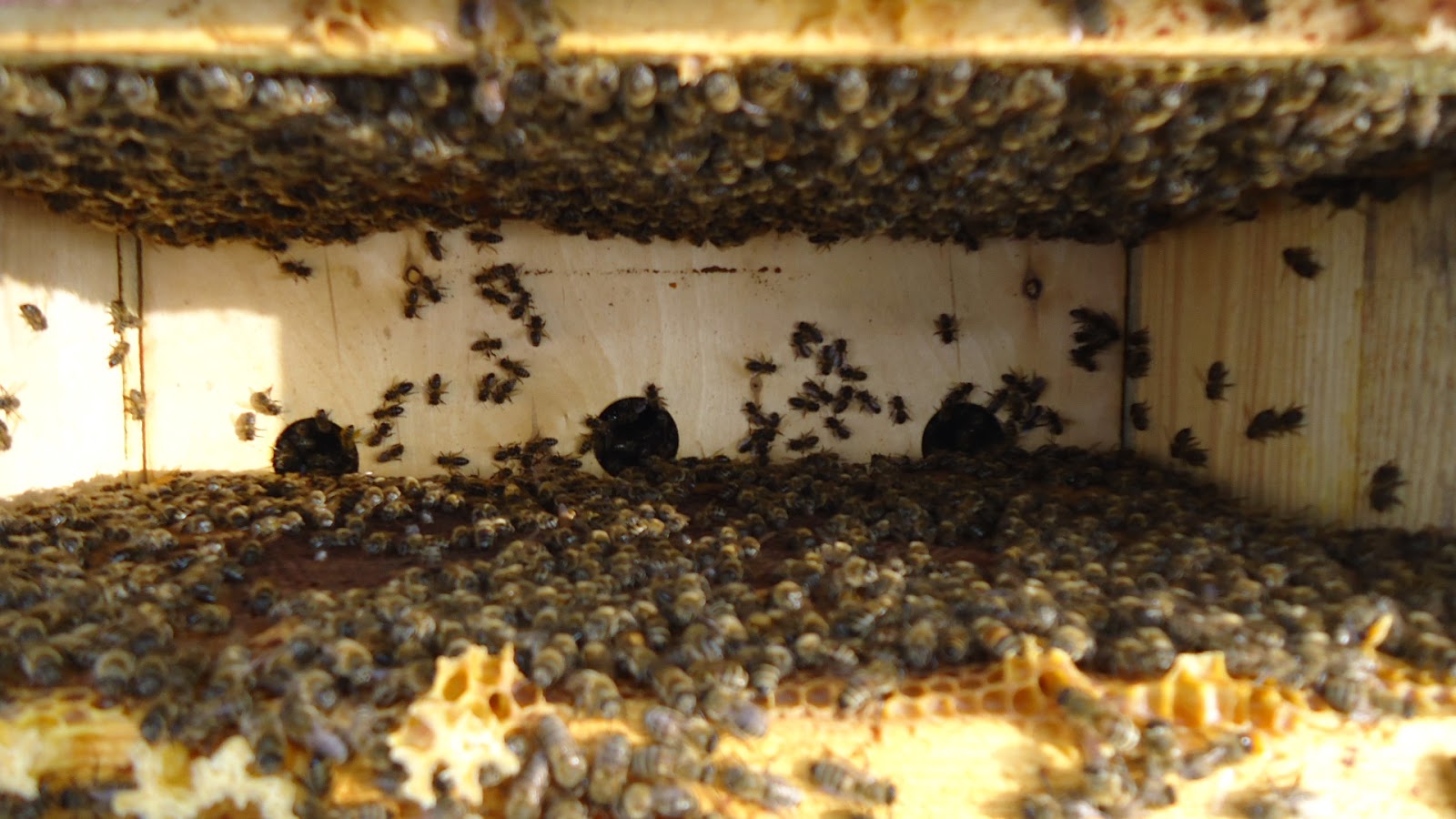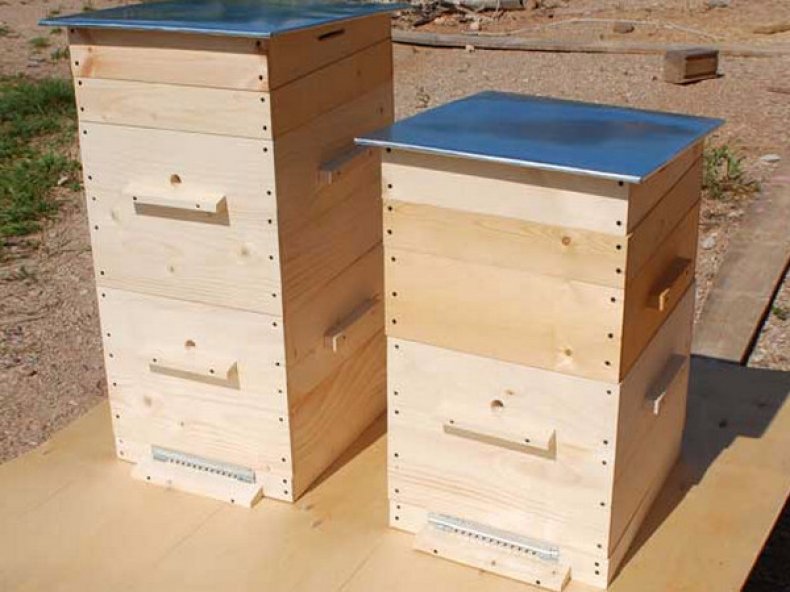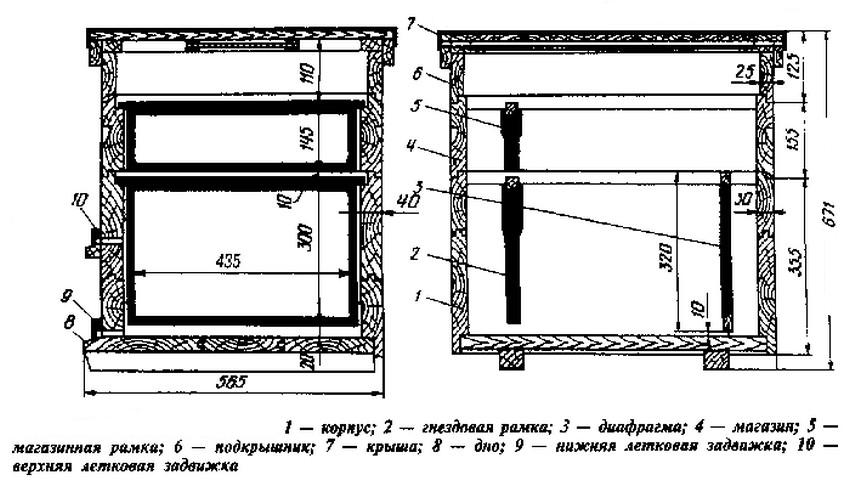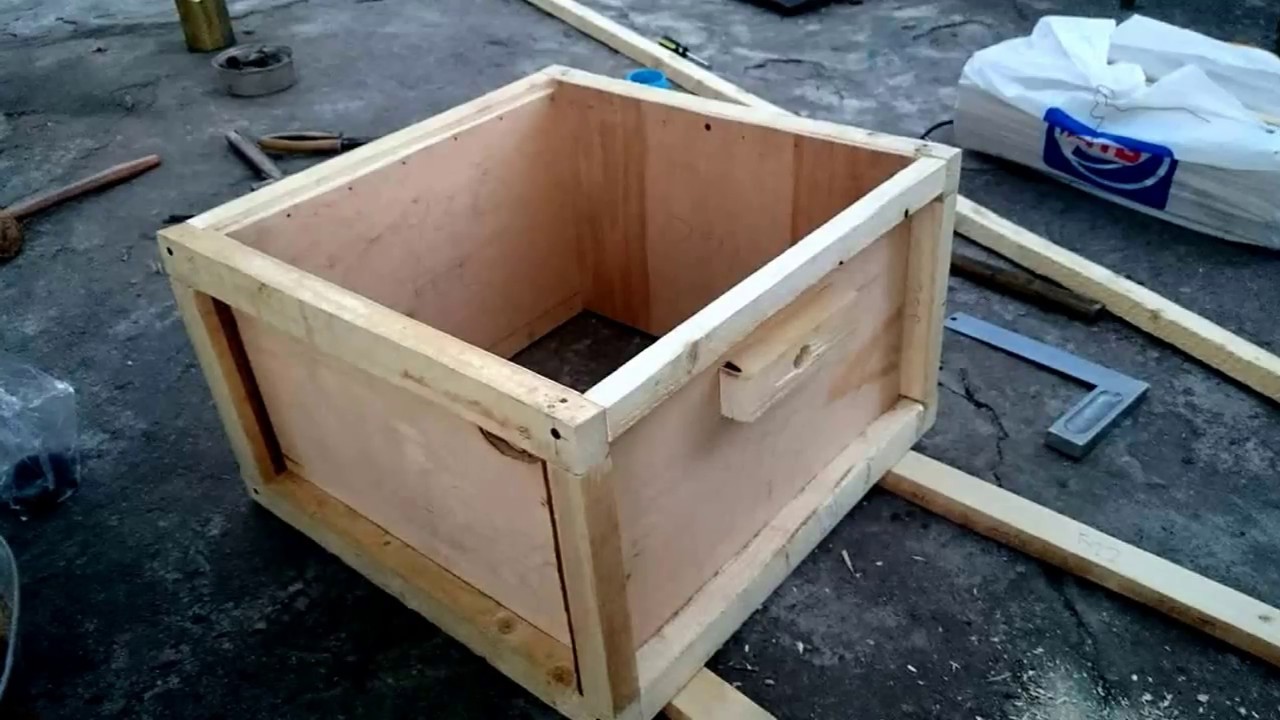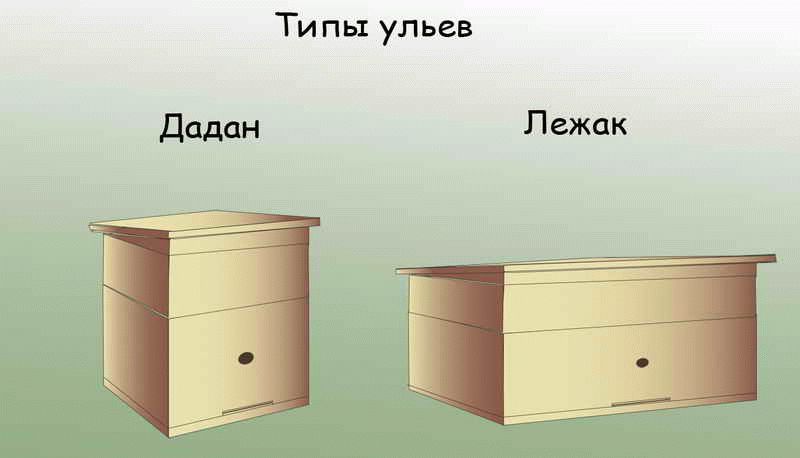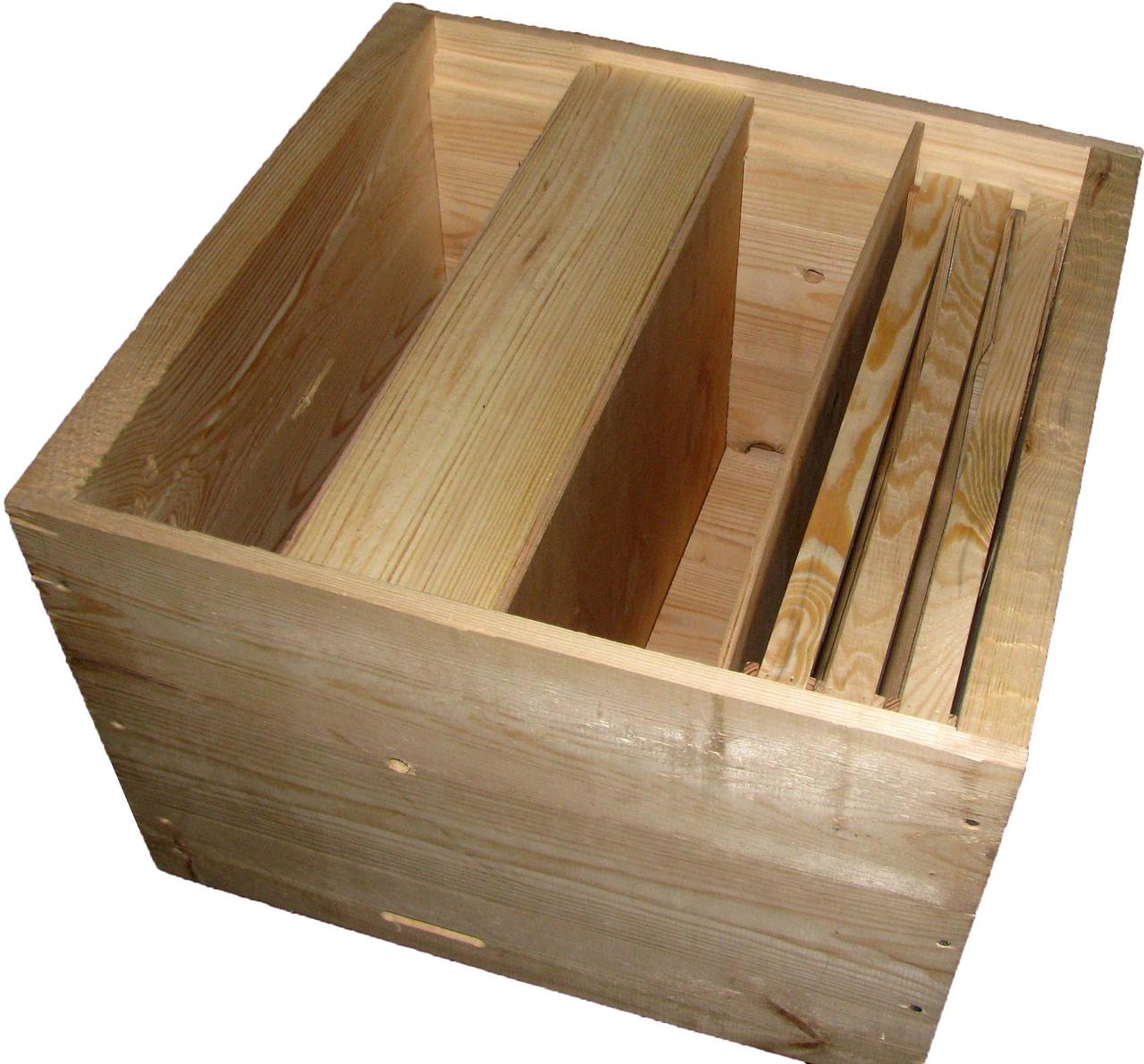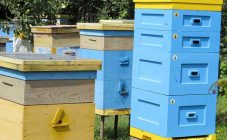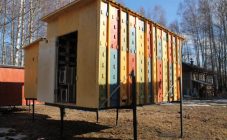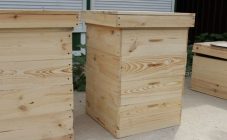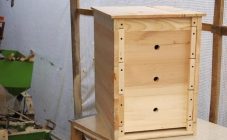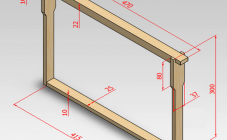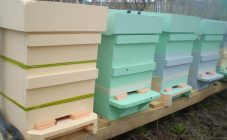Content:
One of the most popular designs of bee houses is the Dadan hive, or as it is also called Dadana-Blatt. It is ideal for the work of novice beekeepers as well as those who work alone.
The founder of the hive is the famous French beekeeper Charles Dadant. It was he who, using simple calculations, designed the bee house, which accommodates two honey-pepper and nine brood and honey frames. Due to this, each such house can accommodate about 10,500 honeycombs.
The size of the frame of the Dadanovsky hive
For a long time, the Dadan hive was considered one of the best and most popular. But some beekeepers did not like it. The design was improved by a Swiss-born Blatt. He shortened the frames, resulting in a modern hive standard. The size of the frame of the Dadanovsky hive for the nest, according to this standard, is 43.5 by 30 cm, the half-frame for the store is 43.5 by 14.5 cm.
The Dadant hive is a single-hull vertical structure expanding with a store extension, which is also called a store.
The device includes:
- reverse bottom;
- body;
- store extension;
- pitched roof;
- notch;
- arrival board;
- nesting frames;
- shop frames;
- plug-in boards.
Underframe space in the Dadant hive
When keeping bees, beekeepers face many challenges. The main one is the death of some bees during the wintering period. In solving this problem, the height of the subframe space plays the main role.
As long-term observations show, in the evidence with a 9 mm underframe space, bees' mortality is about 55 g, with a 20 mm underframe space - 99 g.
Advantages and disadvantages
Like all designs, the Dadant hive has advantages and disadvantages.
The main advantages of the design include:
- spaciousness - one building is enough for a strong family;
- easy access to all frames;
- frame strength;
- long service life, which is at least 25 years;
- spare parts can be easily found on the market or specialized stores, since the structure is made from available materials;
- several configuration options;
- the ability to create a layering while swarming.
Due to their advantages, the designs immediately became very popular and remain in demand at the present time. When using them, free and easy access to all frames is provided; it will not be difficult to repair evidence, since spare parts can be found on the market or in a specialized store.
Hive dimensions
Since the evidence of Dadant is prefabricated modular structures and consists of certain elements, several different options can be assembled from them.
Dimensions of the Dadan hive for 10 frames, drawing
The most popular are ten-frame hives.
Their difference lies in the fact that they have a lightweight and compact body with the following parameters:
- height - 32.5 cm;
- width - 37 cm;
- length - 45 cm;
- store height - 16.5 cm;
- notch - 12x100 mm.
It is relatively easier to work with such constructions. The exact dimensions of the Dadan hive for 10 frames, the drawing and all the features are set out in GOST 20740-75. When making a home for bees, it is very important to focus on these dimensions and the recommended parameters. Dadant's design must be carried out strictly according to the drawings, in which case you can do it yourself.
Construction should begin with the choice of material, which must be durable and resistant to adverse climatic conditions. Particular attention is required to be paid to the subframe space. It should be high. Evidence is now produced with a 2 cm subframe. This indicator applies to all types of evidence.
Dadan foundation size
To speed up the construction of honeycombs, beekeepers prefer to use foundation, which is attached with a frame in the Dadant hive. Novice beekeepers often wonder how many sheets of foundation are in 1 kg of Dadan hive. On Dadanov's frames, 1 kg of foundation contains 14 sheets.
The dimensions of the Dadant foundation are selected, depending on the frame:
- for frames 435x300 mm - 410x260 mm with a tolerance of 2 mm;
- for frames 435x230 mm - 410x230 mm with a tolerance of 2 mm.
Dimensions of 16 frame Dadan hive
Some beekeepers prefer to use not a 10 frame hive or a 12 frame hive, but a 16 frame hive with one body. It is made with our own hands exclusively from natural wood.
This hive has the following dimensions:
- height - 32.5 cm;
- width - 44.5 cm;
- length - 45 cm.
If Dadanovsky evidence is made according to the standard and all the recommendations, as well as the rules of care were observed during operation, then such a dwelling will last for 25 years. Drawings can be found on any thematic site. When making a Dadan hive, 10 frame dimensions of the drawing must be taken into account, they must be carefully adhered to.
Making a Dadan hive from plywood
In the process of organizing or expanding an apiary, the cost of housing for bees plays an important role. Since wood is an expensive material, many people prefer to make it from plywood. Plywood is an affordable material that is as close to natural as possible. In addition, the material is considered to be quite durable.
Thanks to all these characteristics, the plywood hive has the following advantages:
- environmental safety;
- strength;
- practicality;
- acceptable cost;
- dryness;
- light weight.
Regardless of the design features and its dimensions, any evidence consists of the following elements:
- housing;
- bottom;
- shop;
- roof liner;
- roofs;
- minor details.
To build a Dadan 10, 12, 14 or 16 frame hive, the dimensions of the drawings and all other information must be taken from the guest. Next, you need to cut the board into the required number of segments, which are subsequently dissolved into three parts. All parts, according to the drawing, are attached to each other, the joints are glued. At the final stage, all the ends of the self-tapping screws from the inside must be cut off by a grinder. To extend the life of such a structure, it is recommended that all external surfaces be treated with a special water-repellent liquid or painted.
As a result of building a structure with your own hands, you can provide the following:
- a supply of feed that can be folded neatly;
- maximum honey production;
- laying the maximum number of eggs.
All types of plywood evidence are collected in the same way. The microclimate inside the dwelling depends on the thickness of the building material. To protect the space inside the hive from cold and dampness, you should additionally insulate it. Styrofoam is perfect for this.
Which hive is better than 10 or 12 frames
Novice beekeepers often ask which hive is better than 10 or 12 frames? The answer to this question can be different and depend on individual preferences. Long-term experience of farms that are engaged in beekeeping shows that a 12-frame hive is considered optimal for the entire territory of the Russian Federation. It is suitable for both beginner and experienced beekeepers.
It will be easier to decide which evidence is better if you take into account the following nuances:
- a kind of bee;
- physical data of the beekeeper;
- terrain features and temperature indicators.
A ten-frame piece of evidence is a little lighter, and also holds comparatively more when transporting such houses. As for the twelve-frame structure, since it has the shape of a square, it can be installed perpendicular to the nesting cells.
Currently, such designs are rightfully recognized as one of the best developments. Having them in the apiary will significantly reduce the loss of bees in the cold season, and also increase the offspring in the summer. Evidence is never outdated as it is constantly updated, even though the system remains the same. Those who deal with bees can only choose the most suitable design, based on preferences and financial capabilities.

